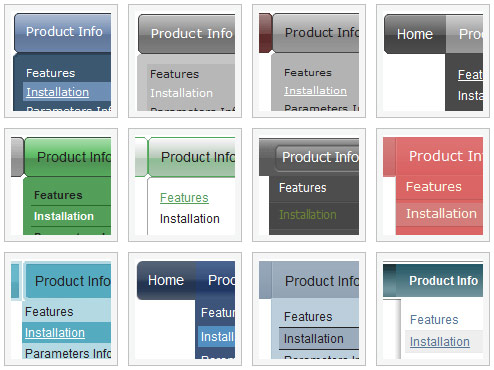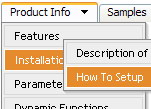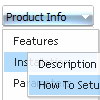Recent Questions
Q: Is there maybe a way that I can set up the menu so that it does not load at all until someone clicks on, say, a link, such as 'Products' and clicking on that link would then load the java menu buttons onto the page in the desired position?
A: Yes, you can do it.
Delete dm_init(); function from data file and use OnClick event foryour 'Products' link.
<a href="products.html" OnClick="dm_init();">Products</a>
Q: My menu bar will not “center” when I view it via the Firefox and Netscape browsers.
It views fine via Internet Explorer. Is there any remedy for this?
A: Try to set exact width for the menu in "px", for example:
var menuWidth="400px";
Q: What is the difference between itemStyles and menuStyles for the down javascript menu?
A: See you should assign the menuStyles to the whole submenu (the first item in the submenu).
itemStyles you should assign for each item individually.
See more info here:
http://deluxe-menu.com/individual-item-styles-info.html
http://deluxe-menu.com/individual-submenu-styles-info.html
Q: Is there a way to capture user click event just like the one in the javascript menu sliding?
A: Unfortunately, you can't assign onmouseover/onClick/onContextMenu event to each item.
However, you can achieve this by using standard html objects within items, for example:
var menuitems = [
["<div onContextMenu='your_code_here'>item text</div>", ""]
];










